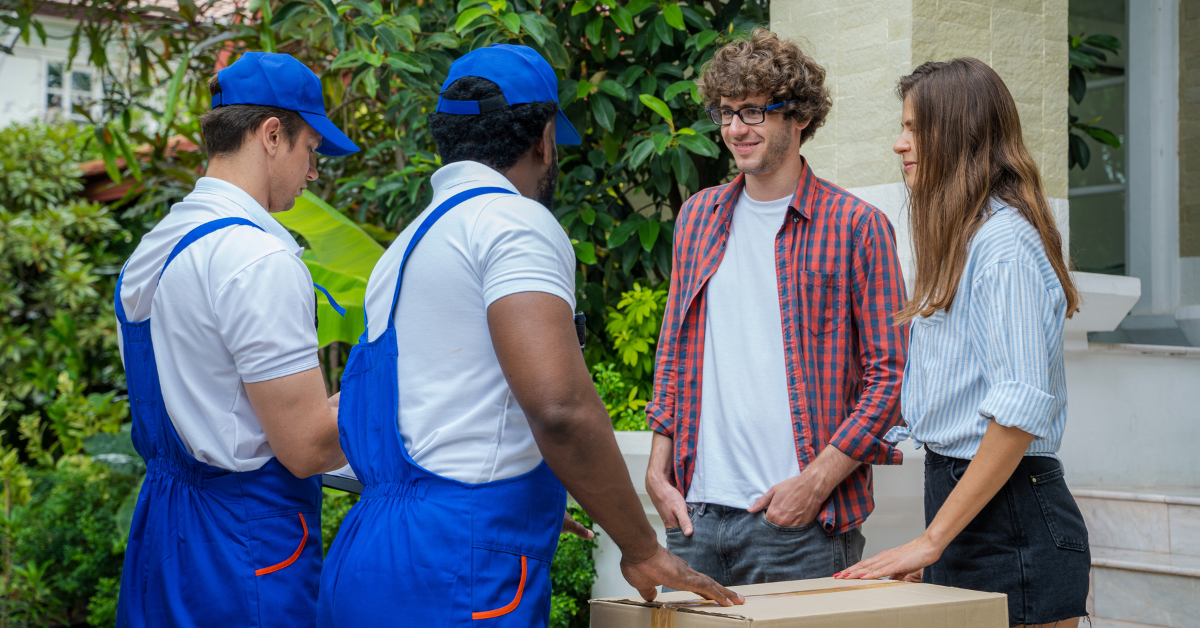How to Pack Clothes Without Looking Like a Disaster After Your Move
This is a subtitle for your new post

Moving to a new home can be both exciting and stressful. Packing up your belongings, including all your clothes, is often one of the more tedious parts of relocating. But taking the time to properly prepare, organize, and pack your wardrobe can save you headaches down the road.
When packing clothes for a move, the main goals are to:
- Transport your garments without damage like wrinkles or tearing.
- Maximize space and fit as much as possible in boxes and suitcases.
- Keep items organized so you can find what you need easily after unpacking.
Clothing often gets crammed hastily into boxes, only to show up a rumpled mess on the other end. Preventing wrinkles and creases should be a top priority. You'll also want to avoid wasting space with inefficient packing that requires more boxes than necessary.
Careful labeling and categorization of boxes by room or season helps keep everything organized. This allows you to unpack quickly and put clothing and accessories right where they belong in your new closets and dressers.
By following the strategies and tips in this guide, you can pack your wardrobe neatly and compactly. This will minimize stress, reduce clutter, and help you feel settled in your new home quickly after a move.
Declutter and Organize Before Packing
Decluttering and organizing your clothes before packing for a move has several benefits:
- It saves you time later. By sorting through your items beforehand, you avoid having to unpack and organize everything in your new home.
- It helps you pack smarter. Knowing exactly what you have makes it easier to determine what to pack together and how to maximize space.
- It reduces stress. Moving is stressful enough without the added chaos of disorganized belongings. Decluttering creates order first.
- It helps you let go. Use packing as an opportunity to be ruthlessly critical about items you haven't worn in over a year. Donate or sell these to downsize.
When decluttering your closet before packing:
- Take everything out so you can clearly see all items. This prevents forgetting about buried clothes.
- Make decisions item-by-item about what to keep, donate or trash. Avoid vague promises to deal with it later.
- Create separate piles or bins for each category of item like shirts, pants, dresses, outerwear, etc.
- Within each category, sort by sub-type like colors, sizes, or seasons. This grouping makes it easier to pack.
- Discard or donate any clothes that are worn out, damaged, or you haven't worn in over a year. Be ruthless!
- Wash any clothes you plan to pack so they're clean for the new home.
Take time upfront to thoughtfully declutter and organize. It will make packing, moving day, and settling into your new home much smoother!
Use Space Efficiently with Rolling and Vacuum Bags
When packing clothes for a move, space efficiency is key. Two techniques that save a lot of room are tightly rolling clothes and using vacuum seal compression bags.
Tightly Rolling Clothes
Rolling clothes is one of the best ways to fit more into your moving boxes and suitcases.
- Lay items face down and smooth out any wrinkles. Start rolling tightly from the bottom seam up.
- Button shirts before rolling and fold sleeves in toward the body.
- Roll pants, skirts, and dresses lengthwise or "hot dog style."
- Roll socks and undergarments into pairs.
- Arrange rolled items upright and tightly packed together in boxes.
Rolling allows you to pack much more compactly with less empty space than folding. It also cuts down on creasing and wrinkles. Just be sure not to roll too loosely or leave gaps. The tighter the roll, the more space saved.
Vacuum Seal Bags
Vacuum compression storage bags are a game changer for packing clothes and linens. They significantly reduce volume so you can fit about twice as much.
- Place items in a bag and seal the opening.
- Use a vacuum to suck out excess air. The bag shrinks down, compressing.11 the contents.
- Save space in boxes and suitcases.
Vacuum bags protect clothes from moisture, dust, and odors. They can be reused if moving storage items long-term. Downsides are they can be prone to punctures and don't stand up well vertically.
Use them strategically for bulky items like off-season clothing, bedding, coats, and pillows. Just avoid compression for structured items like suits or easily wrinkled fabrics.
Prevent Wrinkles
When moving clothes, wrinkles can easily set in if care is not taken to properly pack items. Follow these tips to keep clothes wrinkle-free during a move:
Use Tissue Paper
Wrap delicate items like dresses, blouses, and suit jackets in tissue paper before packing them in boxes or suitcases. The tissue paper acts as a buffer between clothing items and prevents creasing. Make sure to smooth any wrinkles from the tissue paper first so you don't transfer wrinkles onto the clothes.
Invest in Garment Bags
For fancy dresses, suits, and coats, use plastic garment bags. Carefully place the item on a hanger inside the bag and zip it closed. Garment bags protect clothing from dust, dirt, and wrinkles during transit.
Roll Items Tightly
Roll sweaters, t-shirts, pants, scarves, and other casual clothing tightly before packing. This prevents hard creases from forming and compression wrinkles. It also saves space.
Use Packing Cubes
Packing cubes or folders keep clothing neatly contained. Sort clothes into cubes by outfit or by person. The hard sides prevent wrinkling better than a soft suitcase.
Shake Out Fold Lines
Once unpacked, shake out any folded clothing to release fold lines before hanging or folding for storage. This helps remove wrinkles that may have set in.
Steam or Iron If Needed
For wrinkle-prone fabrics like linens and silks, use a handheld steamer or iron to smooth wrinkles after unpacking. Be sure to check clothing tags first and use the appropriate heat setting.
Following these preventative tips will help keep clothes neat and crisp during any move!
Pack by Season
Packing clothes seasonally for your move helps save space and makes unpacking easier. Here are some tips:
Determine What to Pack vs. Store
- Assess what you will realistically need for the season you are moving in. Don't overload boxes with off-season clothing.
- Pack essentials for the current season in your "Open First" box so they are easy to access. This includes basics like t-shirts, jeans, socks and undergarments.
- Store off-season clothing properly to prevent damage from pests, mildew, etc. Use protective garment bags, cedar blocks, or vacuum seal bags.
Save Space
- Packing only seasonal clothing saves room in the moving truck without sacrificing necessities.
- You avoid transporting bulky sweaters and jackets in summer or heavy coats in winter.
- Vacuum compression bags are great for off-season storage as they compress clothing significantly.
Unpack Faster
- Unpacking is quicker when each box contains clothing you need immediately. You won't waste time sorting through clothes for a different season right away.
- Designate boxes by season for easy identification and organization while unpacking boxes.
- Only open storage boxes for off-season clothing as needed down the road. They can be stacked away until it's time to rotate seasonal wardrobe.
Protect Special Items
When packing for a move, it's important to take extra care with delicate, formal, or valuable clothing items to prevent damage. Here are some tips:
- Use garment bags for formalwear like suits, dresses, and gowns. This prevents wrinkles and protects embellishments like sequins or beading. Consider bringing garment bags as carry-ons if they contain very special occasion clothes.
- Wrap accessories like belts, scarves, and hats in tissue paper before packing them in boxes. This prevents snags, stretching, and crushed shapes.
- Pack jewelry in small boxes lined with soft fabric or foam to prevent tangled chains and scratching.Label these boxes clearly as high value.
- Place underwear, lingerie, tights, and other delicates in mesh bags before packing in suitcases. This prevents rips, snags, and stretched out elastic.
- Insert stuffed tissue paper in areas like shoes, purses, and jacket shoulders to hold the shape of delicate fabrics. Shake out and reuse the paper when unpacking.
- Use clean white cotton gloves when handling heavily beaded, embroidered, or vintage cocktail dresses and gowns. The gloves prevent staining from hand lotions and oils.
- Look for garment boxes designed specifically to transport wedding dresses. These provide padding and support for intricate beading and long trains.
- Double bag silks, chiffons, and other ultra delicate fabrics in plastic before packing them. This creates an extra moisture barrier.
- Consider special handling services for extremely high value couture or vintage designer pieces. This ensures white glove care from start to finish.
Taking extra packing precautions for your most precious clothing items gives peace of mind that they'll arrive looking their best. Handle delicates with care so they can be enjoyed for years to come.
Label Effectively
When packing for a move, proper labeling ensures you can easily identify and access items when it's time to unpack. Follow these tips for effective labeling:
- Use color-coded labels to designate different rooms or categories. For example, green labels for kitchen, blue for bathroom, red for living room. This color coding makes unpacking intuitive.
- Number and inventory every box and label the top and sides. Include a description of contents - for example "Kitchen Items 1/10" - so you know exactly what's inside without opening.
- Label any boxes containing fragile items prominently. Use "FRAGILE" stickers on all sides or mark these in bright orange duct tape for high visibility.
- Affix labels securely with packing tape so they don't fall off in transit. Place labels on both the top and side of boxes.
- Create a detailed inventory list of all boxes and their contents. Include the box number, label description, and room category. Keep this list handy during unpacking to locate specific items.
- Use removable or peel-off labels if storing moving boxes long-term. Permanent marker labels can be hard to remove.
- Label wardrobe and clothing boxes by room and owner - for example "Master Bedroom Closet - Jane". Avoid "miscellaneous clothes" labels that complicate unpacking.
Thorough labeling takes time upfront but pays off hugely when unpacking and organizing your new home after a move. Develop a labeling system that works for your needs.
Transport Clothes Securely
When it comes to transporting clothes during a move, proper packing and loading techniques are key to keeping them neat, clean, and wrinkle-free.
Choosing the Right Boxes
Select boxes sturdy enough to hold the weight of clothing without buckling or collapsing. Prioritize new, high quality boxes designed for moving. Avoid using old boxes that may have weak spots. Measure clothing items to determine ideal box size - overstuffed or too large boxes can lead clothes to shift and wrinkle. For lighter items like t-shirts, blouses and underwear, small-medium boxes around 2.5 cubic feet work well. For bulkier sweaters, jeans, jackets and outerwear, larger 3.0+ cubic foot boxes are better.
Packing the Moving Truck
Strategically load boxes of clothes into the moving truck or container. Place heavy items like books and appliances on the bottom. Position wardrobe boxes and lighter clothing boxes on top. Pack snugly to prevent sliding, but avoid overly tight squeezes that could crush boxes. Use furniture pads, moving blankets or bubble wrap to cushion boxes. Tie down wardrobe boxes and stack neatly to minimize movement. Keep seasonal clothing handy and accessible. Check boxes for dents, tears or weak seams after unloading.
Unpack Clothes Efficiently
The key to easy unpacking after a move is to put things away as soon as possible. Don't leave boxes of clothes sitting around. Make unpacking clothes a priority.
Hang Up Items Right Away
As you unpack each box, hang up any shirts, dresses, suits, or other items that can go right into your closet. Getting these items hung up immediately will help prevent wrinkles from setting in. It also gets them out of the way so you're not tripping over piles of clothes.
Use Closet Organizers
Install closet organizers like shelves, bins, and dividers before unpacking. This will make putting away folded items quick and easy. You'll have a designated spot for sweaters, pants, accessories and more. It will also maintain your organization system.
Sort by Room
If you don't want to put everything away immediately, at least sort clothes into piles by bedroom. This prevents you from digging through multiple boxes to find shirts or pants. Just grab the pile for the room you're in.
Do Laundry
Any clothes that seem wrinkled or dirty after the move can be refreshed with laundry. Try to do load after load as you unpack so clothes are ready to wear.
By tackling clothes first and using some simple organization methods, you'll be settled into your new closet and dressers in no time!
Maintain Organization
Once you've unpacked in your new home, it's important to maintain the organization you established when packing. Here are some tips for keeping your clothes neat and accessible in your new closets and dressers:
Use Closet Organization Systems
- Install closet organization systems like shelves, racks, hangers, and drawer dividers to separate and arrange clothes. Consider your closet layout and select adjustable components to maximize the space.
- Group like items together - shirts, pants, dresses etc. Use hanging shelves or stackable bins for sweaters, accessories and folded items.
- Arrange clothes by season, with current season's clothes most accessible. Store off-season items up high or in the back.
- Color coordinate your closet with hangers and shelves. Going by color makes outfits easy to spot.
Organize Drawers
- Use drawer dividers, shelves and trays to separate categories - socks, underwear, T-shirts etc. Consider vertical dividers for narrow drawers.
- Roll clothes vertically and file them standing up to see everything at a glance. This prevents wrinkles too.
- Put felt or mesh between stacks to prevent snagging. Use a drawer liner to reduce friction.
Maintain the System
- Make sure everything has a designated spot when laundering and putting clothes away. Don't let clean clothes pile up randomly.
- Do occasional closet purges. Get rid of clothes you haven't worn in over a year and donate to charity.
- Do a seasonal wardrobe rotation twice a year. Swap out winter and summer clothes.
- Keep frequently used items easily accessible. Adjust your system if needed.
Maintaining organization is just as important as the initial packing and unpacking. A little effort regularly will keep your closets and drawers clutter-free.
In conclusion, mastering the art of packing clothes for your move is just the beginning. With decluttering, smart packing techniques like rolling and using vacuum bags, and organizing your items seasonally, you're setting yourself up for a smoother transition to your new home. If you're looking for an even easier move, Los Panas Movers offers comprehensive packing services to take the stress off your shoulders. Our expert team handles all your packing needs, ensuring a seamless and efficient move. Choose Los Panas Movers for a worry-free relocation experience. Contact us today and make your move a breeze!
You might also like
Book a Service Today
We will get back to you as soon as possible
Please try again later
Quick & Reliable Movers
We are available 24/7 via email or telephone
Location
1777 Polk St Hollywood, FL 33020, USA
Info@lospanasmovers.com
Call
(954) 516-9838
All Rights Reserved | Los Panas Movers LLC is registered with the state of Florida as a mover. Registration No. IM3647





